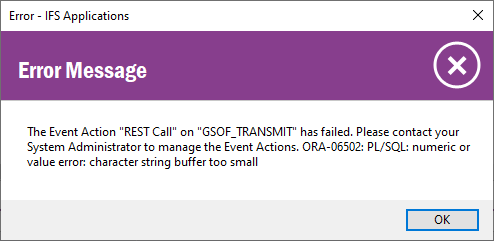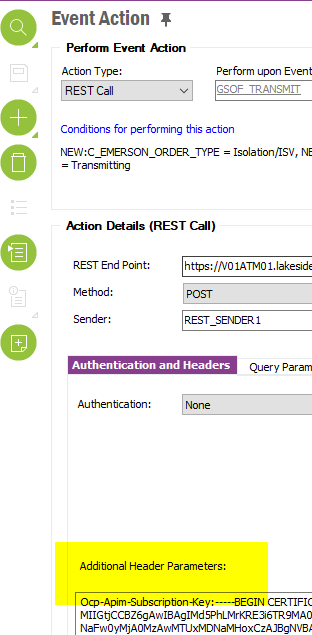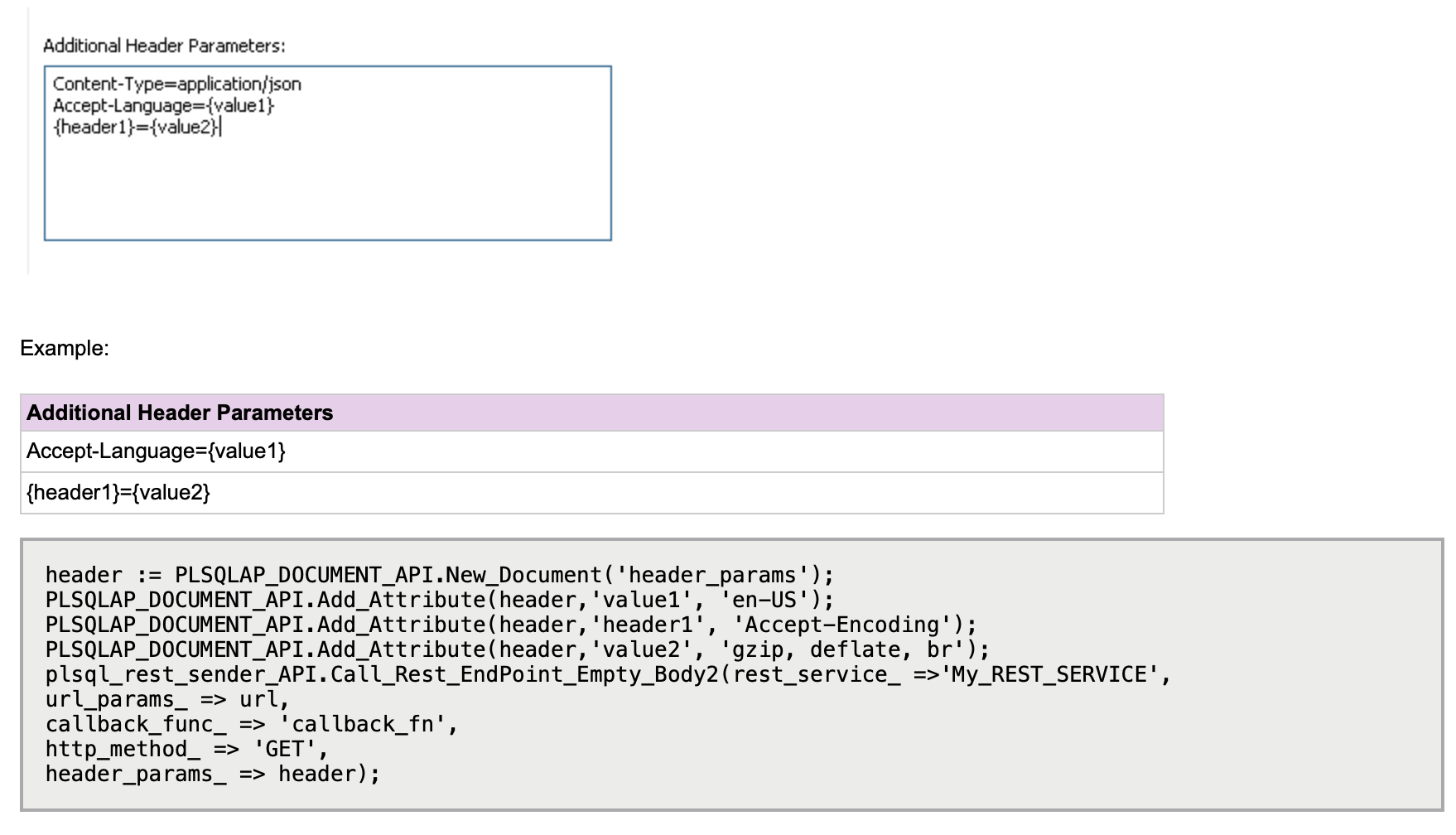We are running Apps10 UPD10
We are using a custom event to make a Rest call. The call includes an header parameter that is a 64encoded value. We are able to put the complete header value in the event and save it. But, when the event runs, I get a “character string buffer too small” error. Any ideas?








